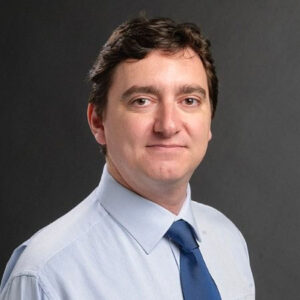Federico Milano
Home / Federico Milano
Presentations:
Low Inertia Systems: Complex Frequency & Simple Control
The conventional power system model for transient stability analysis is based on the assumption of quasi-steady-state phasors for voltages and currents. The crucial hypothesis on which such a model is defined is that the frequency required to define all phasors and system parameters is constant and equal to its nominal value. This model is appropriate as long as only synchronous machines regulate the system frequency through standard primary and secondary frequency regulators. In recent years, however, an increasing number of devices other than synchronous machines are expected to provide frequency regulation. These include, among others, distributed energy resources such as wind and solar. There is thus, from a modeling point of view, the need to define with accuracy the local frequency at every bus of the network.
The lectures presents the definition of “complex frequency” and poses the basis of a set of equations that link this new quantity with the active and reactive power injections at network buses. These relationships allow defining how device models and their controllers impact the frequency at their point of connection. This is particularly relevant in the context of low-inertia systems where the frequency support has to be provided by power electronic converters and devices other than conventional synchronous power plants. All concepts are illustrated through examples based on IEEE benchmark systems.
Stochastic Algebraic-Differential Equations for Power System Modelling and Dynamic Analysis
Traditionally, the stability analysis of power systems has been based on approximated deterministic models whose dynamic behavior is dominated by synchronous machines and their controllers. However, in recent years, the increasing penetration of renewable energy resources, such as wind and solar, has motivated researchers and practitioners to rethink the modeling and simulation of modern electric networks. This seminar will discuss the modeling of uncertainty and volatility due to wind generation through stochastic differential-algebraic equations. Both Gaussian and non-Gaussian processes are considered in talk and particular attention is dedicated to the implementation of the correlation and autocorrelation of the processes. Computer implementation and numerical aspects are also discussed. Simulation results will show the non-negligible impact that stochastic processes in general and correlation and autocorrelation in particular have on the transient behavior of power systems.
The Link between Power and Frequency in AC Power Systems
The conventional power system model for transient stability analysis is based on the assumption of quasi-steady-state phasors for voltages and currents. The crucial hypothesis on which such a model is defined is that the frequency required to define all phasors and system parameters is constant and equal to its nominal value. This model is appropriate as long as only synchronous machines regulate the system frequency through standard primary and secondary frequency regulators. In recent years, however, an increasing number of devices other than synchronous machines are expected to provide frequency regulation. These include, among others, distributed energy resources such as wind and solar. There is thus, from a modeling point of view, the need to define with accuracy the local frequency at every bus of the network.
The lecture consists of two parts. The first part presents an accurate yet simple and computationally inexpensive formula, namely, the frequency divider, that links synchronous machine rotor speeds and bus frequency variations. The second part extends the frequency divider to non-synchronous devices and provides an interpretation of the rate of change of active power injected at a bus. A practical definition of devices that impact on the frequency at their point of connection, namely frequency influencers, is discussed. All concepts are illustrated through examples based on IEEE benchmark systems.
© Copyright 2023 IEEE — All rights reserved. A not-for-profit organization, IEEE is the world’s largest technical professional organization dedicated to advancing technology for the benefit of humanity.


